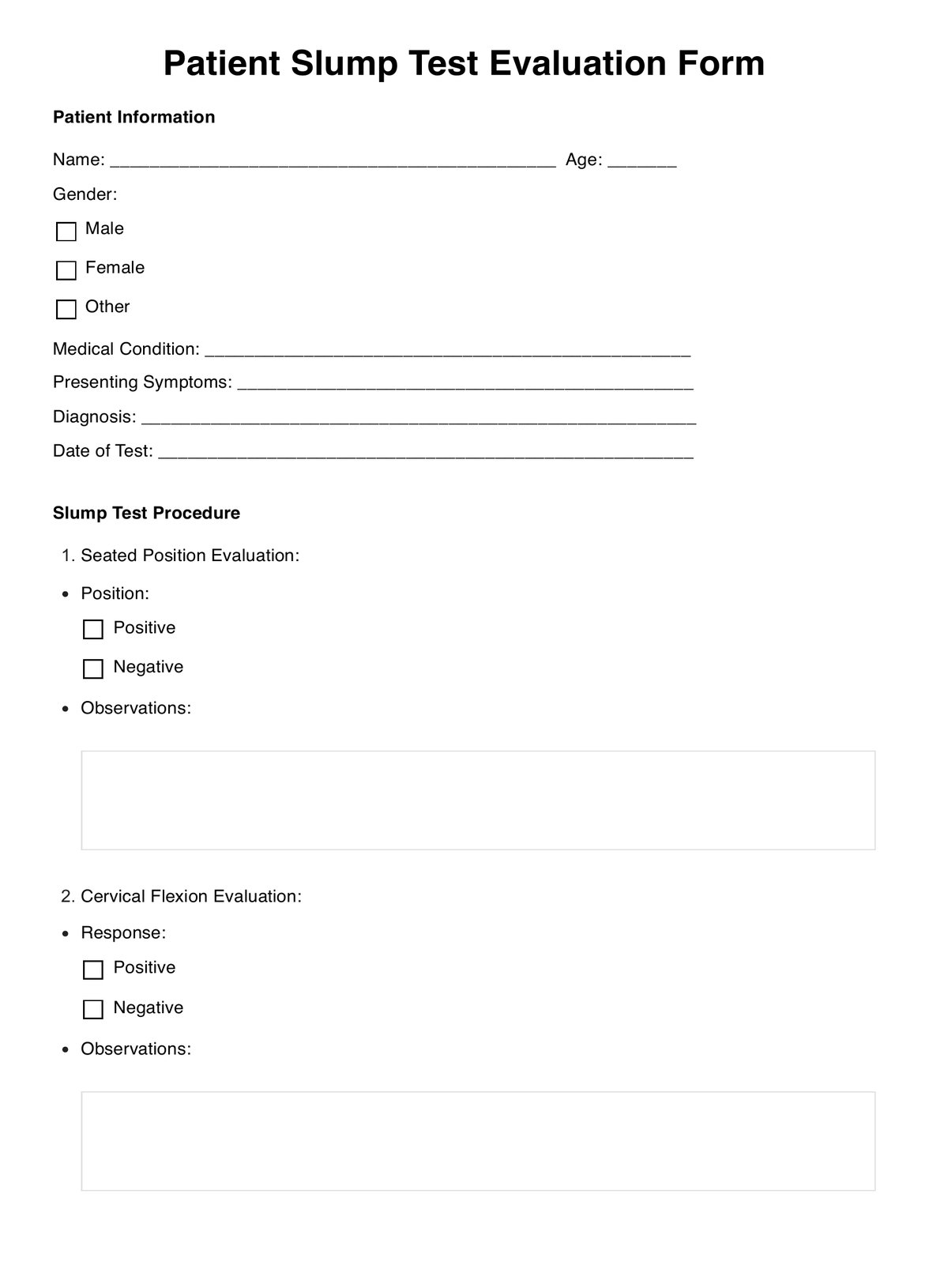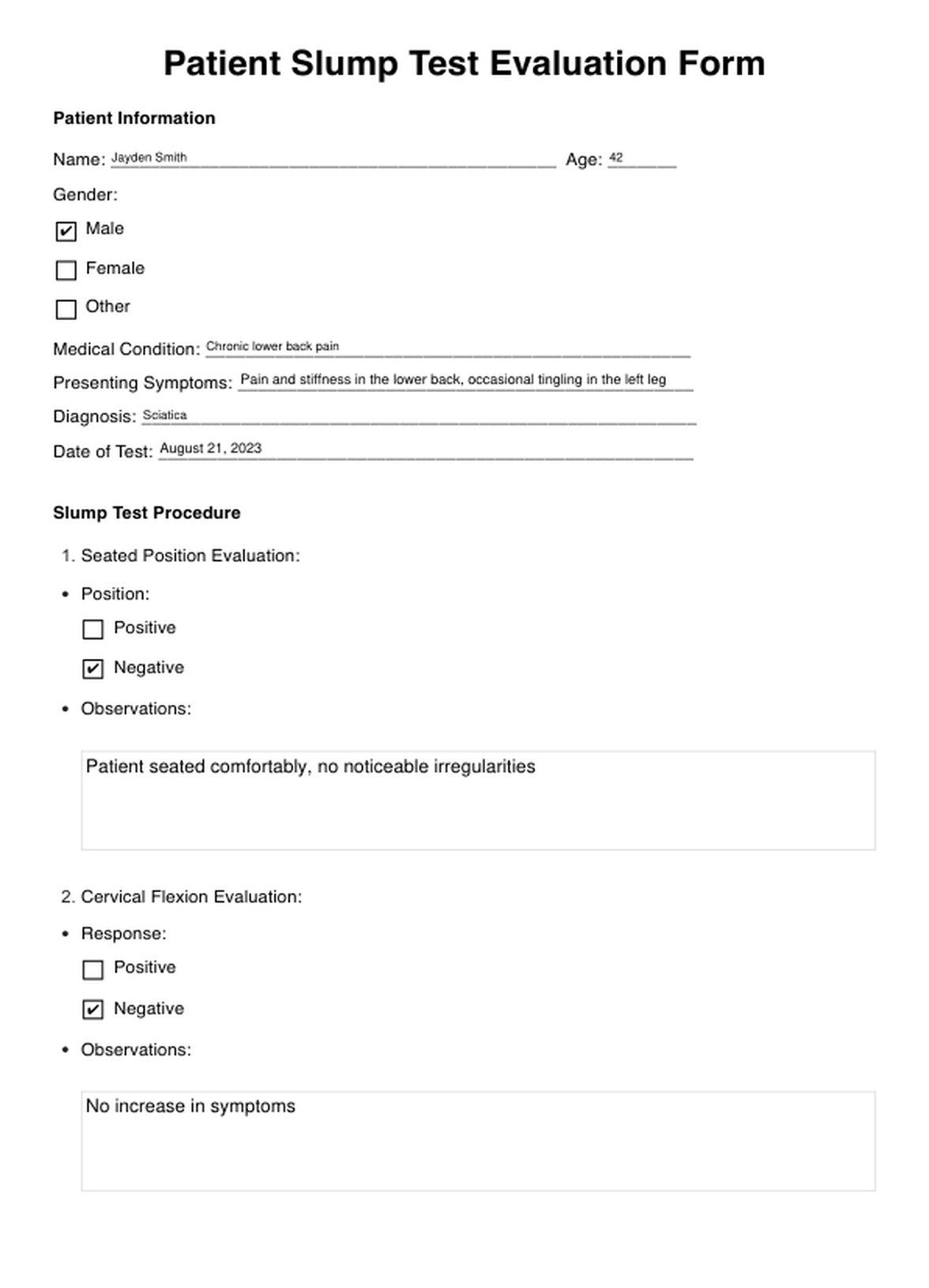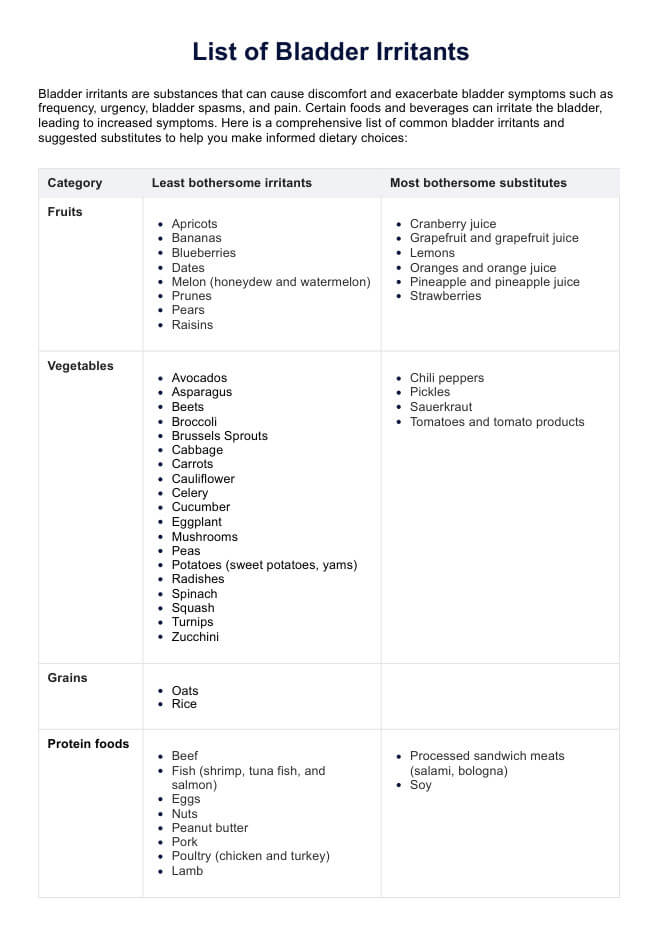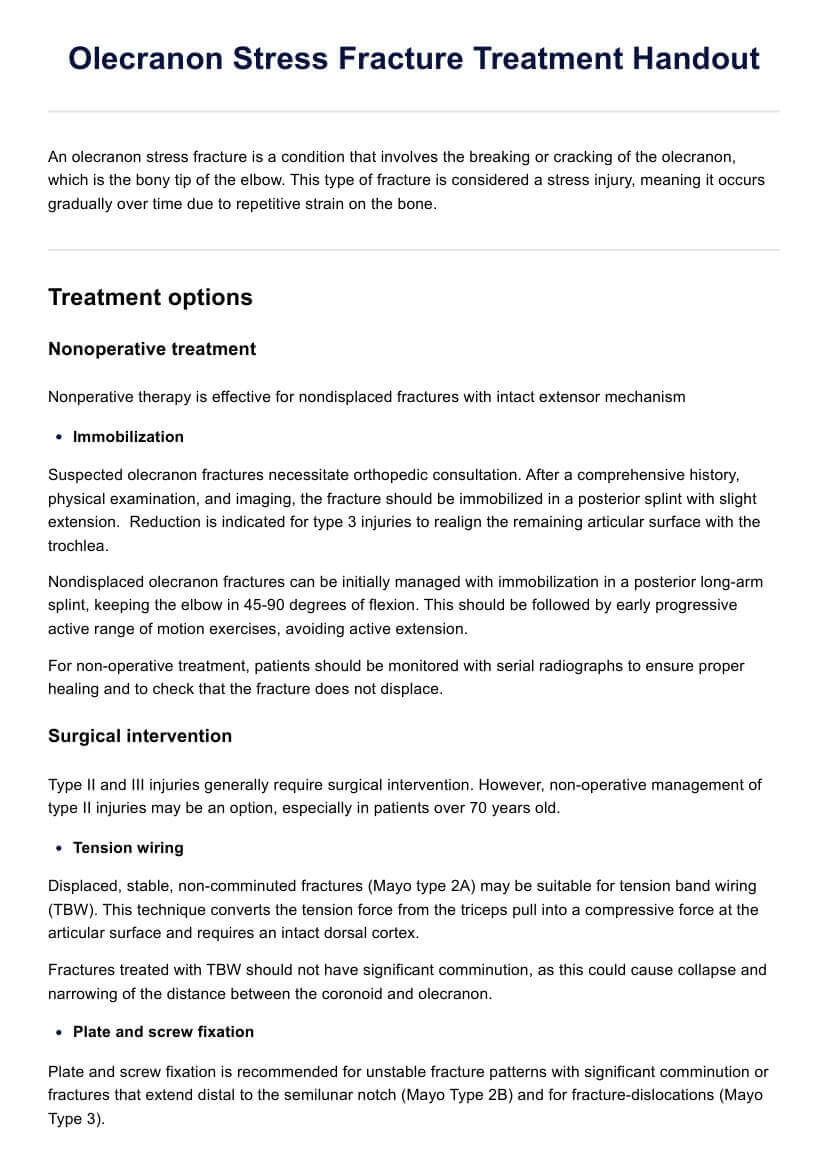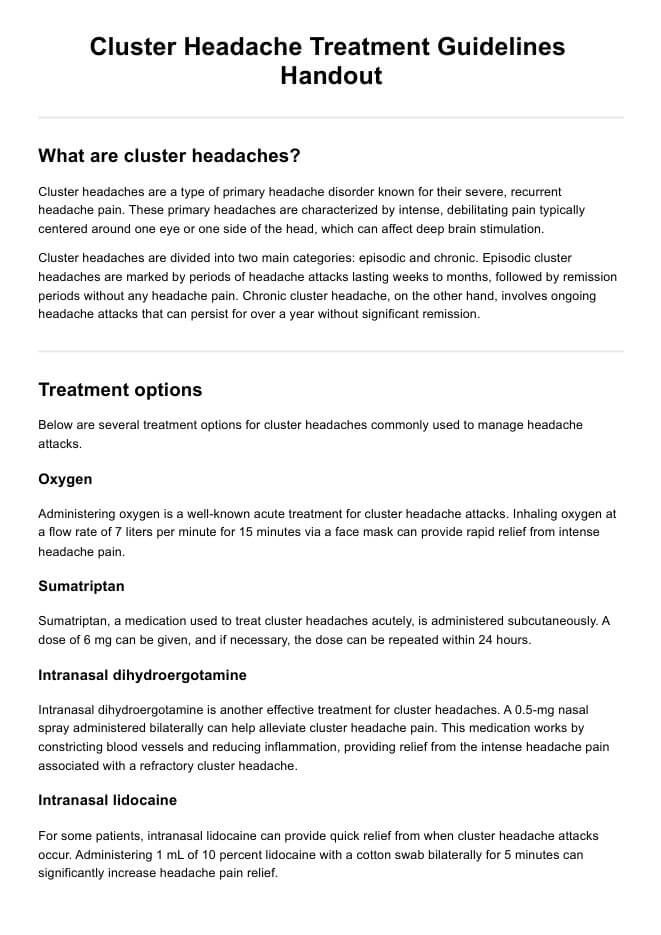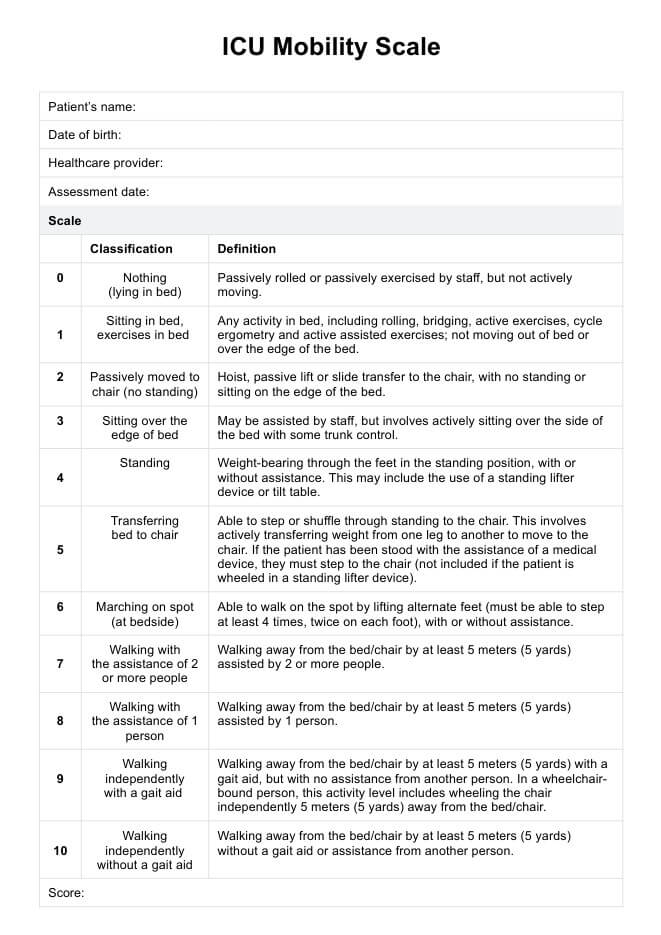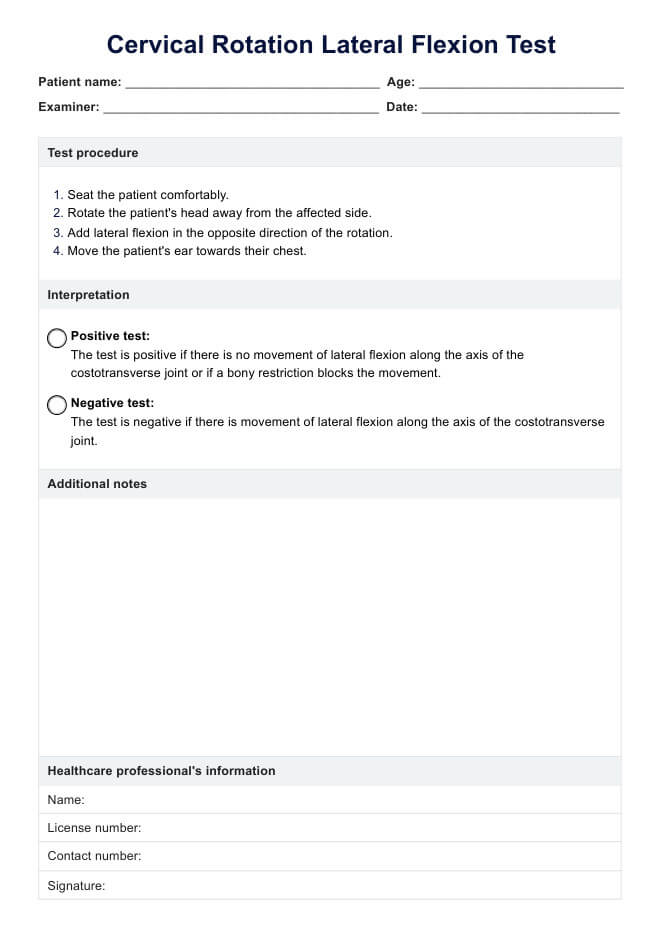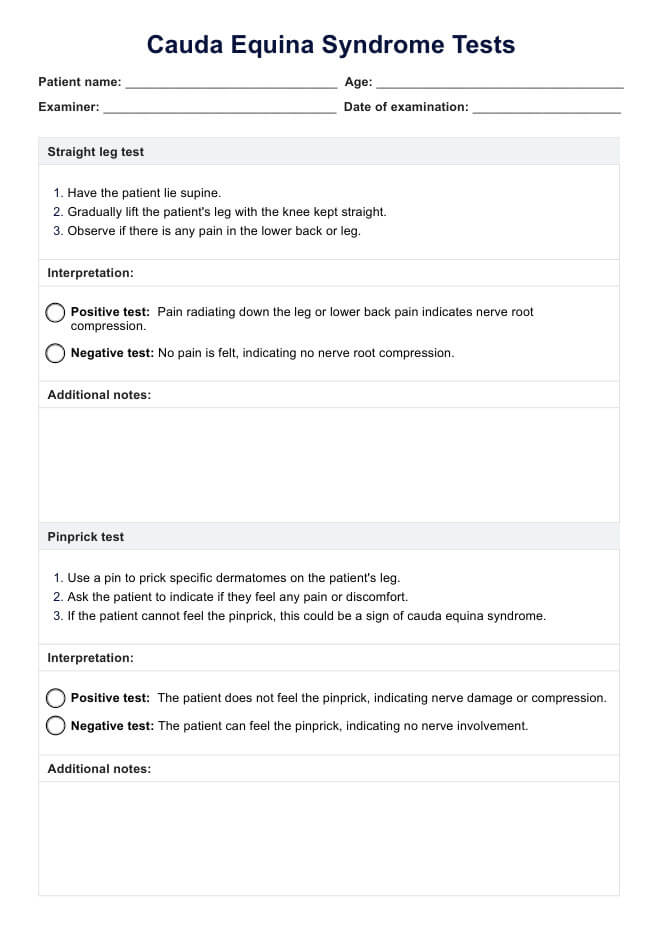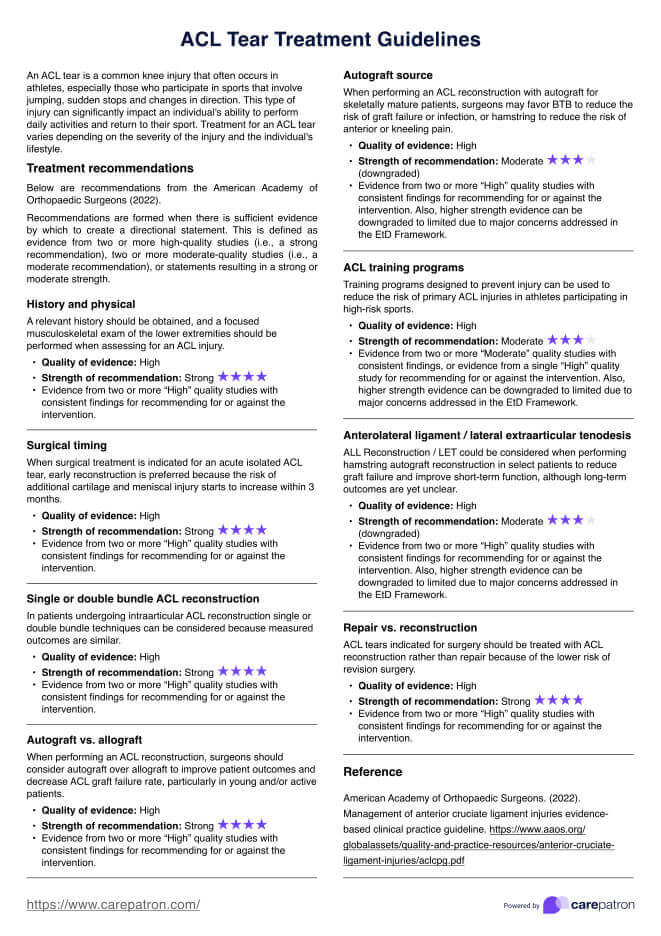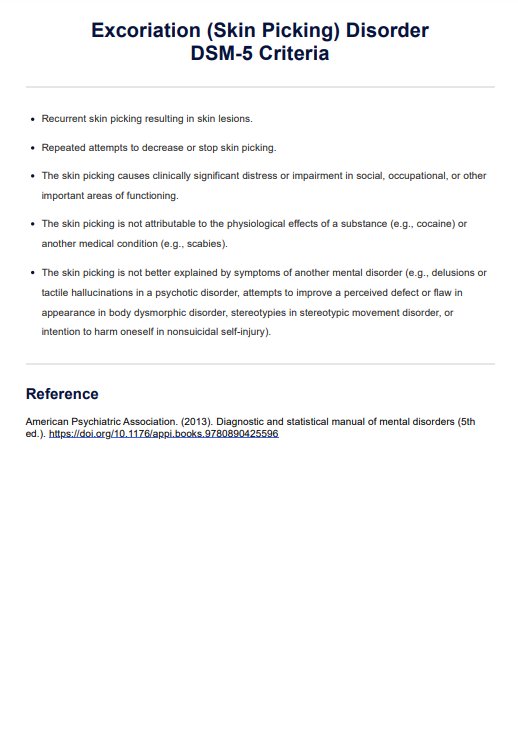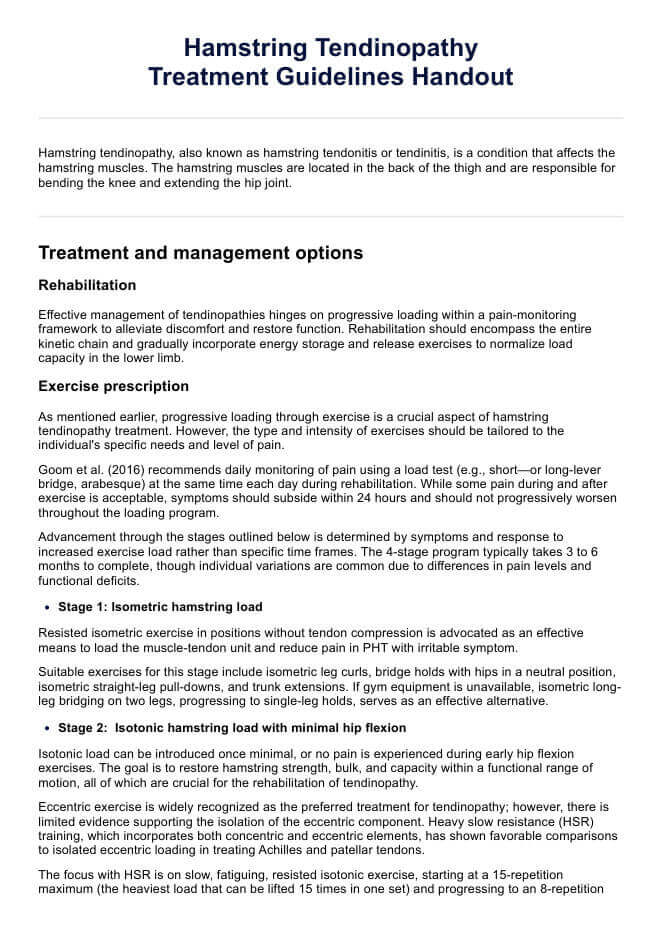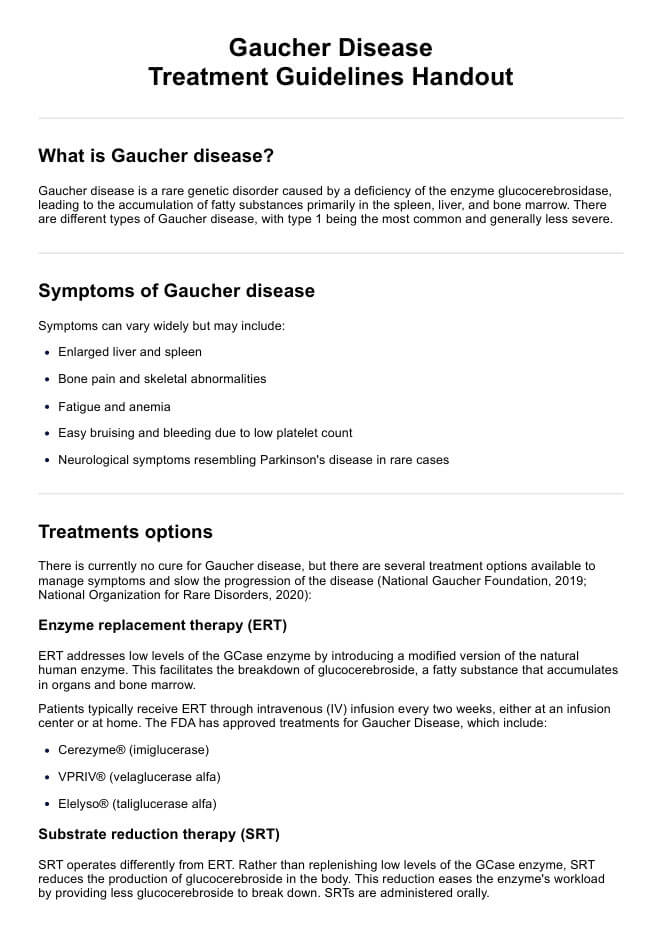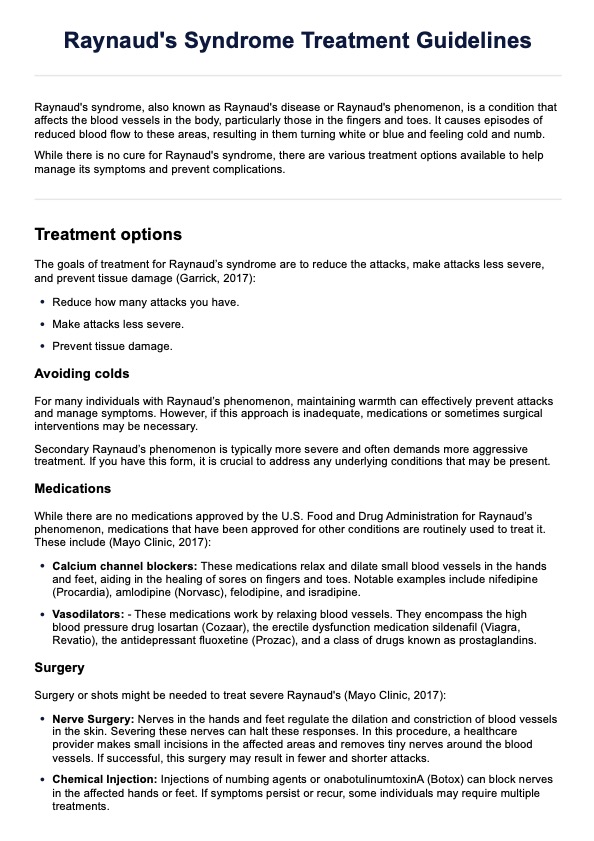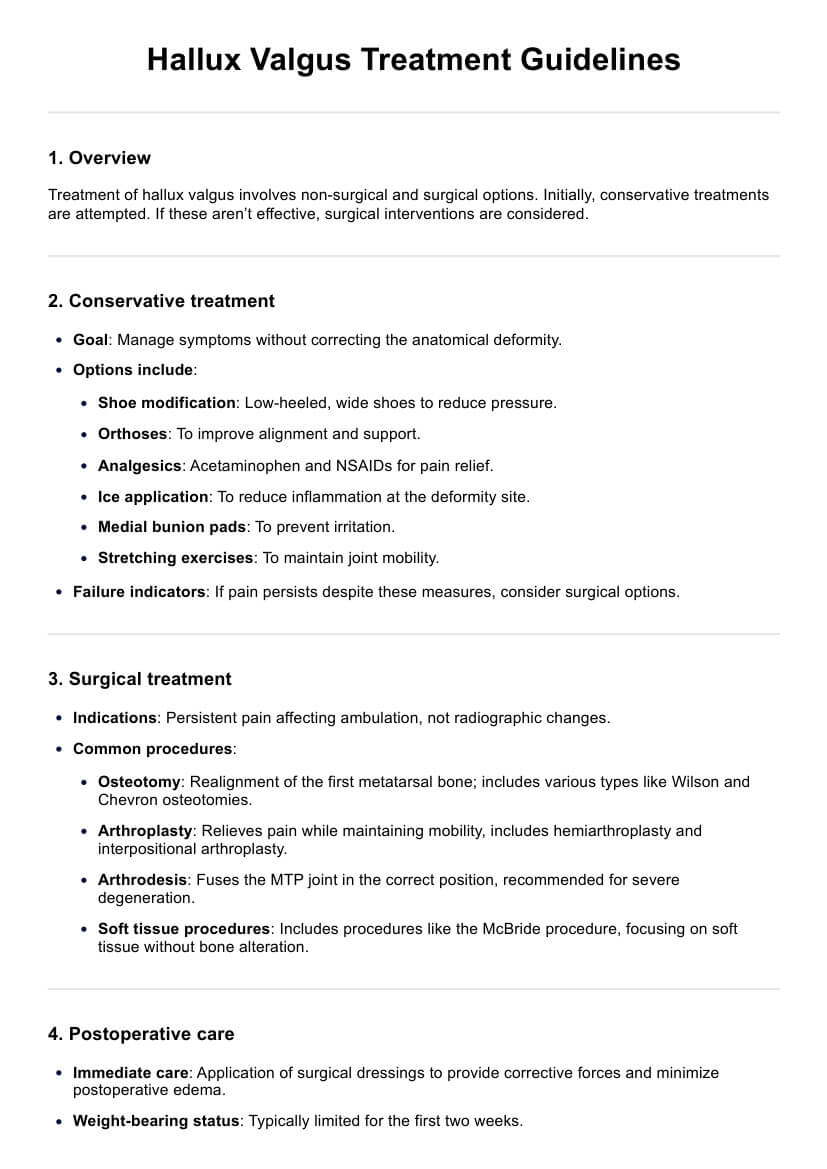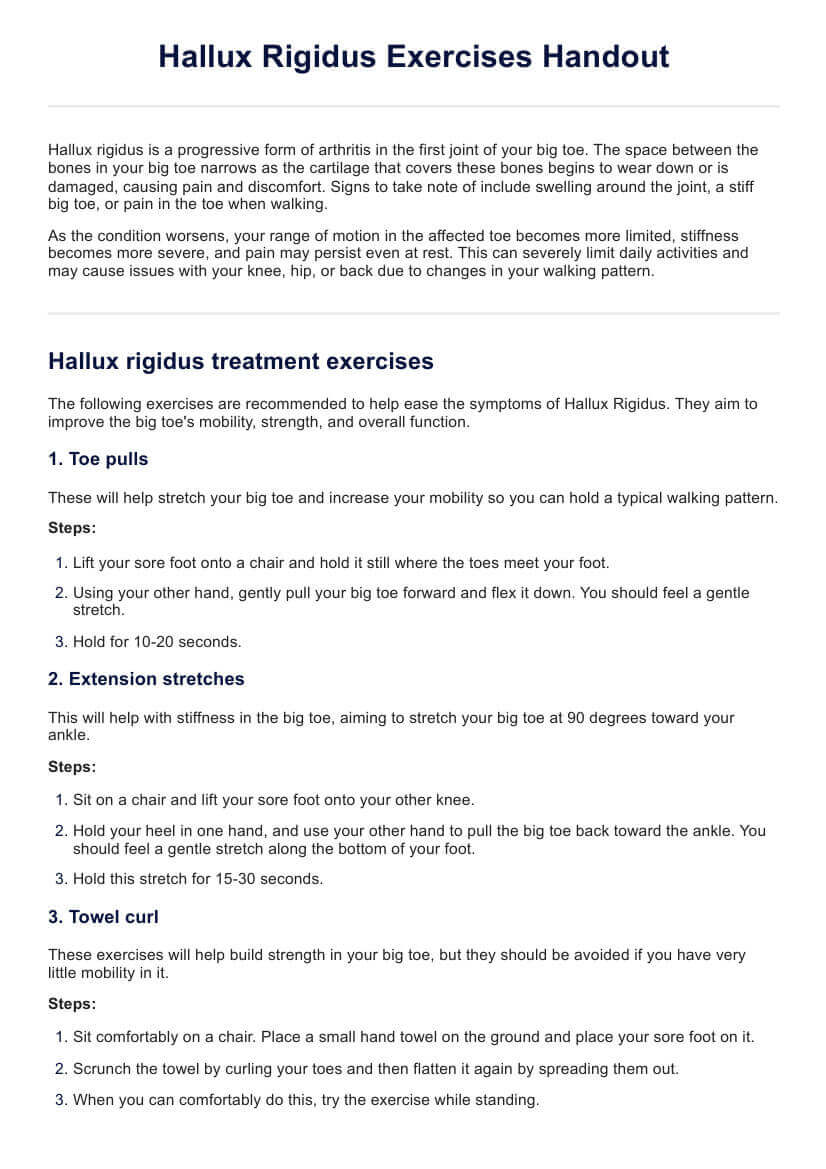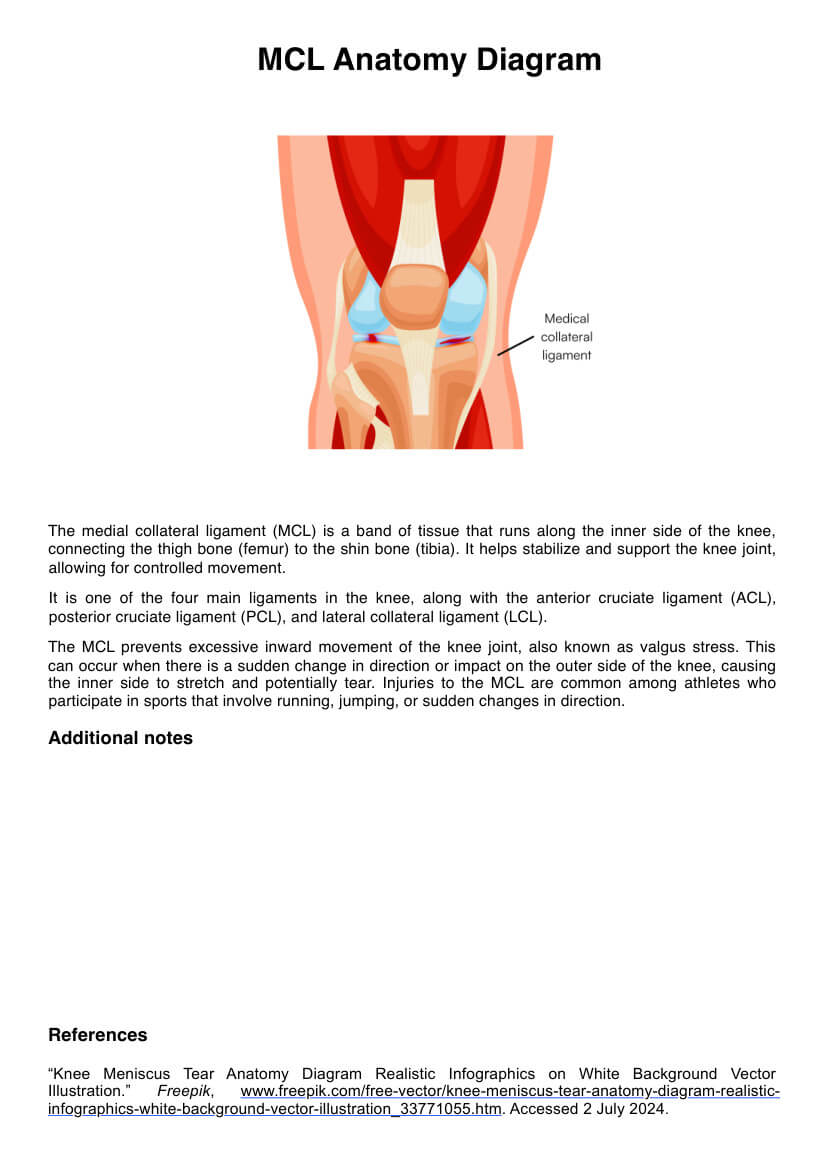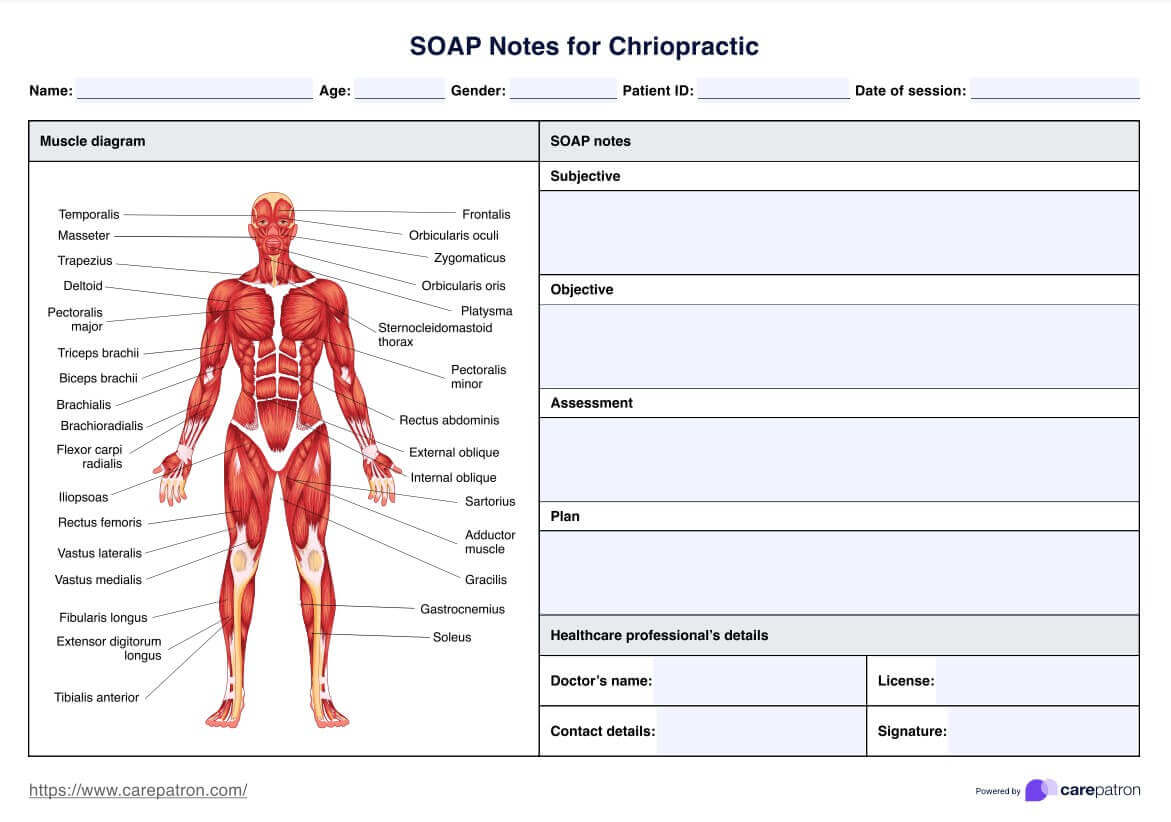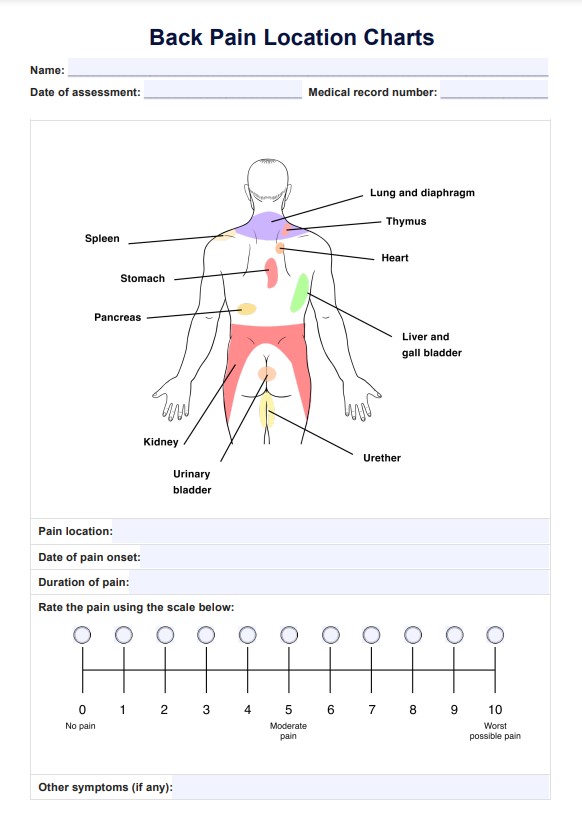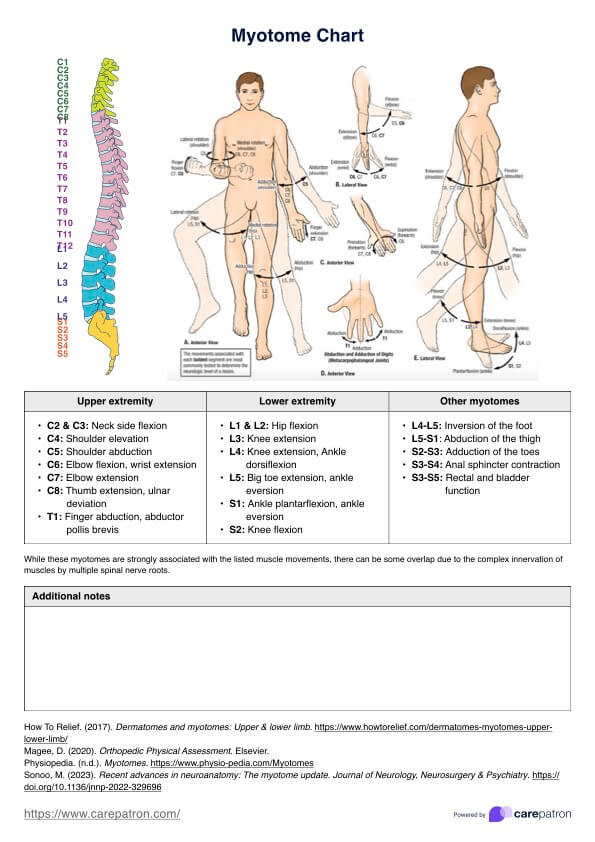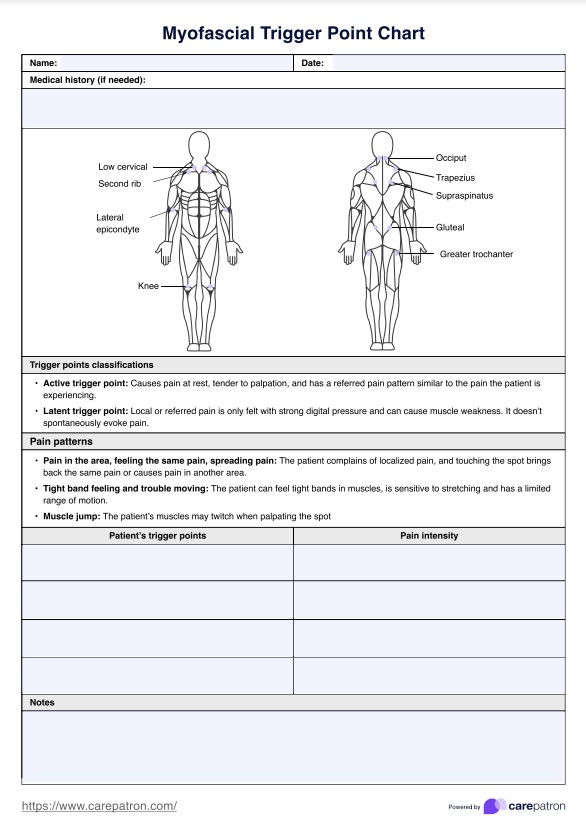Slump Test
Explore the Slump Test, a crucial clinical tool for identifying neural tension issues like herniated discs and sciatica. Download a free sample today!


What is a Slump Test?
The Slump Test is a specific clinical examination designed to detect neural tension or irritation, often related to spinal issues such as herniated discs or sciatica. This test assesses how the nerves respond to tension and can reveal underlying problems affecting the spinal cord and nerve roots.
In healthcare, the Slump Test is essential for understanding patients' neuromuscular function. Unlike a concrete slump test, which assesses the workability of cement, the clinical examines the neurodynamic function. It can help clinicians discern specific neuromuscular issues contributing to a patient's pain or discomfort. This information is vital for devising appropriate treatment plans and ensuring effective interventions.
Slump Test Template
Slump Test Example
How does it work?
The Slump Test is a valuable diagnostic tool in clinical settings, particularly for identifying neural tension or issues related to the spine and nervous system. By carefully executing a series of maneuvers, healthcare professionals can assess whether the nerves, spinal cord, and related structures function correctly.
Step 1: Seated Position Evaluation
The patient is asked to sit on an examination table and observe their initial posture and alignment. Any abnormalities in posture can be indicative of underlying issues.
Step 2: Cervical Flexion Evaluation
While maintaining a slumped position, the patient's neck is gently flexed forward, and the practitioner observes for any signs of discomfort or reproduction of symptoms.
Step 3: Knee Extension Evaluation
The knee is slowly extended, increasing the neural tension along the spine. A positive response, such as pain or tingling, may indicate neural irritation or tension.
Step 4: Dorsiflexion of Ankle Evaluation
This step further accentuates the tension in the nerve by dorsiflexing the ankle. The patient's response is carefully monitored to detect any abnormal signs.
Step 5: Repeat with the Other Leg (if applicable)
The test may be repeated on the other leg to analyze both sides of the body and compare findings comprehensively.
Step 6: Interpretation and Documentation
The healthcare provider interprets and documents the findings using a specially designed form. The results guide the diagnosis and treatment recommendations.
When would you use this Form?
The Slump Test is a specialized examination that is highly context-specific in its application. Its utilization is not limited to a mere suspicion of neural tension; it can be a part of a comprehensive evaluation in various clinical scenarios.
Patients with unexplained pain radiating down the legs, or those experiencing tingling or numbness, can be candidates for this test. It helps distinguish between neurological and muscular issues, providing more clarity in complex cases.
The Slump Test can also be an essential step in a follow-up assessment, particularly after an intervention has been applied, or during a rehabilitation program. By continuously monitoring the neural responses, healthcare providers can adjust treatment modalities, ensuring they are tailored to the patient's unique condition and recovery trajectory.
Suspected Herniated Disc
Patients exhibiting symptoms suggestive of a herniated or protruding disc, such as localized spinal pain, radiating leg pain, or tingling sensations, can benefit from this test. The Slump Test can help confirm or rule out the involvement of neural structures.
Sciatica Evaluation
Sciatica, where the sciatic nerve is irritated, often presents with pain radiating down the back of the leg. The Slump Test can help discern if the pain is truly sciatic or if it's due to another cause.
Differentiating Neurological from Muscular Issues
In cases where it's unclear if symptoms stem from muscular sources or neural ones, the Slump Test can be an invaluable tool to help discern the origin of discomfort.
Post-operative Assessments
After spinal surgeries or interventions, the Slump Test can be used to monitor neural health and ensure that no new irritations or issues have arisen post-operation.
Unexplained Radiating Pain
When patients complain of unexplained radiating pain, tingling, or numbness, this test can be an initial step in the investigative process.
Regular Monitoring in Rehabilitation
For patients undergoing rehabilitation, especially after neural or spinal injuries, the Slump Test can be a regular monitoring tool to check progress and ensure the patient's neural health remains optimal.
Benefits
Over the years, the Slump Test has proven to be more than just a diagnostic tool. Its incorporation in clinical evaluations offers numerous benefits:
1. Early Detection
Being a straightforward and non-invasive test, it facilitates the early detection of potential neural issues, thereby enabling early interventions which can be critical in preventing chronic complications.
2. Cost-Effective
This test negates the need for expensive diagnostic tools or invasive procedures for initial evaluations, making healthcare more accessible and affordable.
3. Simple Execution
The beauty of the Slump Test lies in its simplicity. It requires minimal equipment and can be executed swiftly, making it patient-friendly and easy to administer.
4. Guides Treatment
One of the primary utilities of any diagnostic tool is to inform treatment decisions. The Slump Test provides a clear picture of neural health, thus aiding clinicians in designing the most effective treatment strategies.
5. Supports Differential Diagnosis
In the complex realm of spinal and neuromuscular health, arriving at an accurate diagnosis can be challenging. The Slump Test provides clinicians with vital information that can help distinguish between various conditions.
6. Evidence-Based
Its adoption in clinical practice is backed by numerous research studies, attesting to its reliability and relevance in patient evaluations.
Research & Evidence
The Slump Test's foundation lies in understanding neurodynamics and the body's response to neural tension. Its development is a testament to the integration of clinical observation, anatomical understanding, and evidence-based practice.
Various research studies have validated the efficacy of the Slump Test, with different methodologies employed to determine its reliability and accuracy. These studies have endorsed its use and provided insights into how it can be best utilized, considering variables like patient positioning and provider expertise.
Historically, the Slump Test represents a significant advancement in neuromuscular assessment. It signifies a move towards more nuanced and patient-specific evaluations rather than broad-brush approaches. The continual refinement and validation of the test reflect an ongoing commitment to evidence-based care in physical therapy and beyond.
These additional paragraphs provide more context and depth to the sections and help in understanding the broader relevance and applicability of the Slump Test in clinical practice.
Commonly asked questions
Physical therapists, chiropractors, and other healthcare professionals involved in neuromuscular care.
When there's suspicion of neural tension or irritation, such as herniated discs or sciatica.
Symptoms are elicited through carefully executed steps, and findings are recorded to guide diagnosis or treatment.


